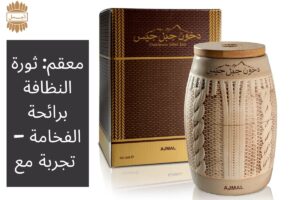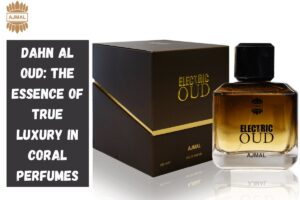Table of Contents
ToggleIntroduction: Beyond the Music, Into the Fabric
When you think of Suicideboys, you think of raw, unfiltered emotion in sonic form. But beyond their music lies a world of expression equally potent—fashion. Suicideboys fashion has become a new wave of self-expression, giving fans a way to wear Suicideboys Merch their truths and communicate their emotional identity without ever saying a word. This isn’t just merch—it’s a uniform for those who live on the edge of mainstream culture, who embrace darkness as a part of their light, and who find power in pain.
The Foundation of the Suicideboys Aesthetic
The visual identity of Suicideboys fashion is rooted in the same themes that define their music—grief, addiction, alienation, and rebellion. Their clothing mirrors their lyrics: heavy, layered, and brutally honest. From oversized fits and distressed fabrics to cryptic symbols and confrontational text, every piece tells a story. This isn’t style for style’s sake; it’s storytelling through stitches.
The Rise of Emotional Streetwear
Streetwear has always been about identity, but Suicideboys take it further—they make it emotional. Their fashion isn’t just about what’s cool. It’s about what’s real. Suicideboys merch often features lyrics that feel like confessions, visuals that resemble nightmares, and silhouettes that offer comfort instead of conformity. Fans aren’t just dressing up; they’re dressing out, expressing what lives beneath the surface.
Oversized as a Statement, Not a Trend
The oversized fit found throughout Suicideboys fashion isn’t just a nod to streetwear—it’s a form of emotional armor. Loose clothing provides a sense of security, a physical buffer from the outside world. For many, these garments feel like a hug, a way to disappear, or a subtle form of protest against the body-image pressures of modern fashion. Oversized has become the perfect canvas for oversized emotions.
Symbols That Speak Louder Than Words
Suicideboys merch is full of visual cues that resonate with fans on a deep level. Skulls, crosses, serpents, chains, and cryptic fonts aren’t just edgy graphics. They’re symbols of survival, spiritual conflict, and emotional weight. These visuals tap into the darker elements of the psyche and turn pain into power. They tell the world, “I’ve been through it, and I’m still standing.”
G*59: More Than a Label
The G59 logo isn’t just branding—it’s a badge of belonging. It represents a movement of authenticity, emotional depth, and musical independence. Fans wear it not just to show support, but to signal that they’re part of a community that understands pain, embraces chaos, and still finds beauty in the breakdown. G59 has become a fashion symbol of resistance against polished perfection.
Mental Health and the Fashion Conversation
What makes Suicideboys fashion truly revolutionary is how it engages with mental health. In a world where depression and anxiety are often hidden behind smiles, their clothing invites honesty. It creates space to be vulnerable. Lyrics printed on hoodies like “I want to die in New Orleans” aren’t glorifying sadness—they’re acknowledging it. For fans, that visibility is healing. It’s fashion that feels like therapy.
Creating Connection Through Clothing
When you see someone in Suicideboys apparel, there’s an unspoken connection. It’s not about fandom—it’s about understanding. The clothes become a kind of emotional shorthand, a way of recognizing fellow survivors of mental warfare. It turns public spaces into support groups, concerts into spiritual experiences, and clothing into a language of shared struggle and silent solidarity.
A DIY Spirit in a Commercial World
Despite growing popularity, Suicideboys have held onto a do-it-yourself spirit. Their designs still carry the raw energy of underground art. There’s a sense that these aren’t mass-produced items but curated pieces with meaning. The graphics look hand-drawn, the textures feel worn, and the drops are limited—reminding fans that they’re not buying into a trend but investing in something personal and rare.
Why It Resonates with the Youth
In a time when Gen Z and younger Millennials are navigating identity, trauma, and self-worth under the spotlight of social media, Suicideboys fashion offers a counter-narrative. It allows people to be real instead of perfect. It gives them a chance to wear clothes that feel like them—messy, emotional, and unfiltered. This new wave of expression connects with a generation desperate for authenticity.
A Fashion Revolution from the Margins
Mainstream fashion often overlooks the emotions Suicideboys lean into. That’s what makes their approach radical. They don’t try to sanitize their message or appeal to mass markets. Their merch embraces what most brands run from: pain, fear, existential dread. And yet, this rawness is exactly what draws people in. It makes their fashion more than wearable—it makes it relatable.
The Art of Limited Drops and Lasting Impact
Suicideboys rarely flood the market. Instead, they drop collections with intention and scarcity. That choice creates anticipation and value—not just financial, but emotional. Fans remember where they were when they bought that hoodie, what they were going through when they heard that lyric. The clothing becomes more than fabric; it becomes a timestamp of their journey.
Fashioning Identity, Not Just Outfits
More than anything, Suicideboys fashion allows fans to build identity. It’s a way of claiming space in a world that often misunderstands them. By wearing something that reflects their internal world, fans turn their pain into a visual statement. They use fashion not just to look good, but to feel seen.
Conclusion: Clothing the Unspoken
Suicideboys fashion is a revolution Suicide Boys Hoodie wrapped in cotton. It’s the convergence of music, art, and emotional truth, offering a wearable voice to those who struggle to speak. In every thread lies an invitation to be yourself—messy, emotional, chaotic, and real. In every piece, there’s a reminder: you’re not alone. This is more than fashion. This is expression, survival, and art.




